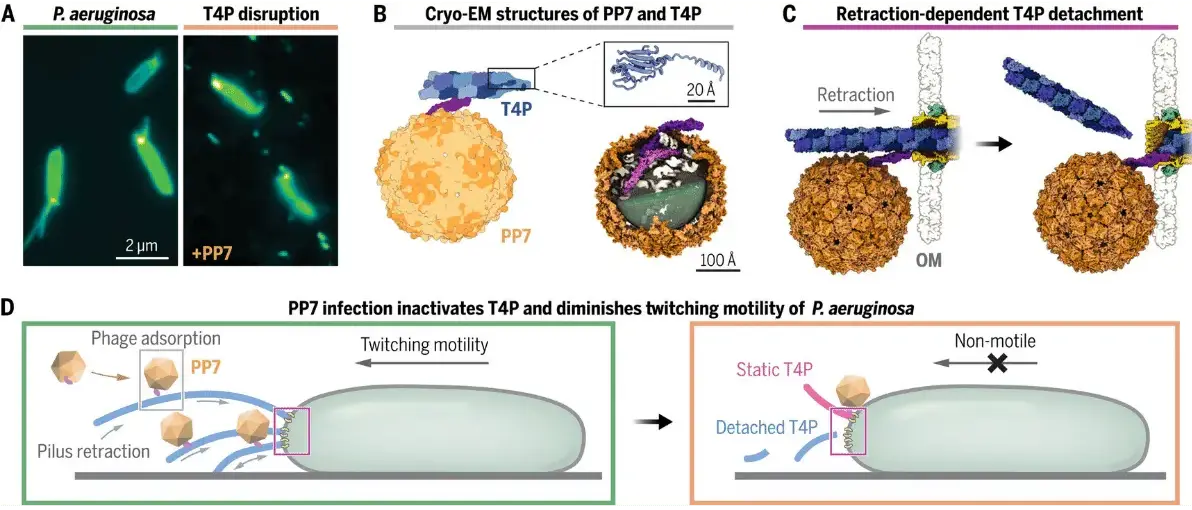Bacterial infections present formidable challenges in both agricultural and medical domains, particularly amid the alarming rise of antibiotic-resistant bacteria. In response, researchers at Texas A&M AgriLife Research have been unraveling the intricate ways in which viruses that infect bacteria, known as bacteriophages or phages, neutralize these pathogens. Their work holds promise for the development of innovative treatment approaches.
In a groundbreaking study published in Science, Professors Lanying Zeng, Ph.D., and Junjie Zhang, Ph.D., from the Texas A&M College of Agriculture and Life Sciences Department of Biochemistry and Biophysics, shed light on a precise mechanism by which phages incapacitate bacteria.
Contents
The Need for Novel Treatments
Pseudomonas aeruginosa, a notorious bacterium, is known to cause infections in various parts of the body, including the blood and lungs, with a concerning prevalence in healthcare settings. The escalating cases of multi-medicine-resistant P. aeruginosa infections underscore the urgency for new treatment strategies. This bacterium serves as a focal point for exploring phage therapy, an alternative treatment method that employs phages to combat bacterial infections.
Zeng and Zhang, along with their colleague Jason Gill, Ph.D., are spearheading research at the Texas A&M Center for Phage Technology, not only in phage therapy but also in delving into the underlying structures and mechanisms.
Targeting Bacterial Appendages
One of the key factors facilitating the spread of antimicrobial-resistant genes and the formation of resilient biofilms in P. aeruginosa is an appendage called a pilus, resembling a spear. These structures protrude from the bacterial surface, enabling some phages to attach to them and facilitate bacterial infection.
In their study, led by Texas A&M graduate students Jirapat Thongchol and Zihao Yu, the researchers meticulously examined this process using advanced microscopy techniques and computational modeling. They observed how a phage named PP7 attaches to the pilus, which subsequently retracts, pulling the phage toward the bacterial surface. Upon entry, the pilus bends and breaks off, significantly impairing P. aeruginosa’s ability to infect its host.
Continued Exploration
This research builds upon previous findings by Zeng’s team, which identified a phage capable of disrupting the pili of E. coli cells, thereby impeding the spread of antibiotic-resistance genes. The team’s investigations extend beyond Pseudomonas, with recent studies published in Nature Communications focusing on interactions between Acinetobacter and phages.
The researchers credit their progress to AgriLife Research’s state-of-the-art cryo-electron microscope, which enables the resolution of atomic-level structures. This technology has facilitated a deeper understanding of protein structures and molecular interactions involved in phage-mediated disarmament.
Medical Implications
The implications of this research extend to medical applications, offering potential alternatives for treating antimicrobial infections. Instead of directly killing bacteria, as in phage therapy, allowing phages to disarm bacteria could empower the immune system to combat infections independently or enable the use of lower antibiotic doses.
By disrupting bacterial appendages, such as pili, phages prevent the exchange of medicine-resistance genes and hinder bacterial mobility, without causing cell lysis and releasing harmful toxins into the host.
Looking Ahead
The team remains committed to exploring similar instances of phage-mediated attenuation of pathogenic bacteria. Their collaborative efforts aim to decipher universal mechanisms employed by phages and their potential application in combating multi-medicine-resistant bacteria.
“We’re taking a synergistic approach,” Zhang explains. “We’re endeavoring to unravel a universal mechanism underlying this type of phage and its impact on diverse bacterial species. That’s the overarching goal of our collaborative endeavor: to address the challenge of multi-medicine resistant bacteria effectively.”

